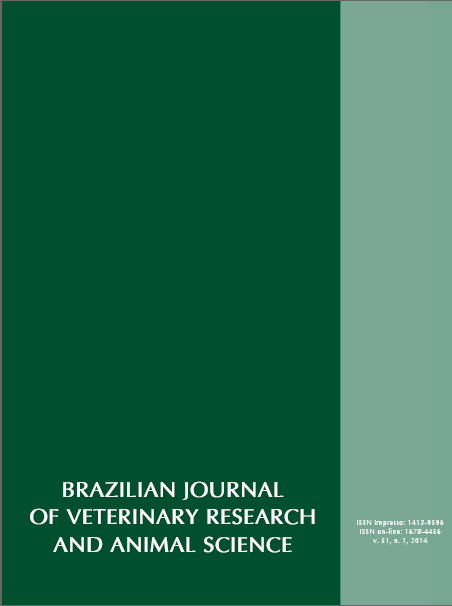Central and peripheral oxytocin profiles during milking in ewes
DOI:
https://doi.org/10.11606/issn.1678-4456.v51i1p68-77Keywords:
Catheterization, Milk ejection, Cerebrospinal fluid, Sheep, LactationAbstract
The present work investigated the possible relationship between central and peripheral oxytocin (OT) release during milking in experimental ewes. Ten multiparous ewes were divided into four groups according to milk ejection stimuli: exclusive machine milking (EM), mixed-management milking and suckling, lambs separated during the night and reunited with their mother after morning milking (MMS); mixed-management with manual milking (MMM), and exclusive suckling (ES) lambs also separated during the night. Simultaneous sampling of cerebrospinal fluid (CSF) and blood was performed during milking. The means, standard deviations, variation coefficients, and minimum and maximum CSF and plasma OT concentrations were the following, respectively: 257.88 ± 265.90 pg/ml, 103.11%, and 11.70 and 1000.00 pg/ml. No statistically significant correlations were found between OT concentrations in the CSF and plasma samples (EM: -0.26; ES: -0.19; MMM: 0.05; MMS: 0.04). The OT concentration in CSF was not influenced by milk ejection stimuli, although plasma OT was higher in the MMM (679.80 ± 25.63) and MMS (591.82 ± 30.56) groups compared with the EM and ES groups. Additionally, plasma OT concentrations were higher in the OME group (381.04 ± 22.09) compared with the AE group (218.82 ± 27.04). In conclusion, no positive correlations were found between central and peripheral OT concentrations during milking and suckling. Plasma OT concentrations differed as a function of milking management and had consequences for both milk ejection and production. Plasma but not CSF oxytocin concentrations were influenced by different milk ejection stimuli.
Downloads
Downloads
Published
Issue
Section
License
The journal content is authorized under the Creative Commons BY-NC-SA license (summary of the license: https://





